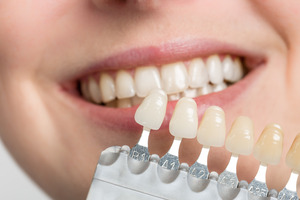
The pursuit of the perfect smile has led to numerous dental innovations over the years. Among these, dental veneers stand out as a remarkable achievement, transforming countless smiles and growing in popularity with each decade. If you’re curious, here’s what you should know about their history.
Hollywood’s Influence in the 1930s and 1940s:
In the glamorous world of the 1930s and 1940s Hollywood, a radiant smile was essential. Dental aesthetics gained traction among the elite, spurring advancements in veneer technology. More dentists began to realize that the appeal of veneers wasn’t limited to actors; everyday individuals too could benefit immensely from them. However, this era wasn’t without its challenges. Traditional fake teeth often looked unnatural, and many suffered tooth loss from decay and oral diseases. The introduction of composites and porcelain brought a ray of hope. These materials, especially porcelain, offered a more natural appearance, with added resilience against discoloration and wear. Yet, the bonding issue persisted. Dr. Charles Pincus in 1937 took a pioneering step by fabricating temporary acrylic veneers, though they were limited by weak adhesion.
The Leap in the 1950s:
The late 1950s heralded a game-changer. Dr. Michael Buonocore introduced the etching technique in 1959. By applying a mildly acidic solution to the teeth, a stronger bonding surface was created. This wasn’t just a win for veneers; sealants, onlays, inlays, and crowns also reaped the benefits. This technique set the foundation for further research into effectively bonding porcelain veneers to etched enamel.
The Modern Era (1980s – Today):
Fast-forward to the 1980s, and another monumental shift occurred in veneer technology. R.J Simonsen and J.R Calamia, standing on the shoulders of giants like Buonocore and Pincus, made a groundbreaking discovery. They found that etching porcelain with hydrofluoric acid created a robust bond between porcelain and composite resins. This meant veneers could now be permanently fixed to teeth, ensuring longevity and reliability. Calamia’s scholarly articles further validated this technique, highlighting its long-term effectiveness.
The journey of dental veneers, from Hollywood’s temporary fixes of the 1930s to today’s durable solutions, is a testament to the wonders of research and innovation. This evolution beautifully showcases the intersection of art and science in dentistry. As we appreciate modern veneer applications, it’s essential to remember and celebrate the rich history and relentless efforts that brought us here.
About the Author
Dr. Shauna Soltani is a distinguished dentist who graduated from the University of Colorado School of Dental Medicine. With a relentless commitment to expanding her expertise, she has pursued further education in areas such as cosmetic dentistry, TMJ/bruxism treatments, root canal therapy, orthodontics, Invisalign, and BOTOX injections for chronic pain relief. Dr. Soltani blends advanced technology with a patient-first approach, ensuring comfort and understanding at every step. Her philosophy centers on comprehensive patient care and delivering transformative smiles that stand the test of time.
If you have any questions about veneers, she can be reached at her website or by phone at (720) 608-7770.



